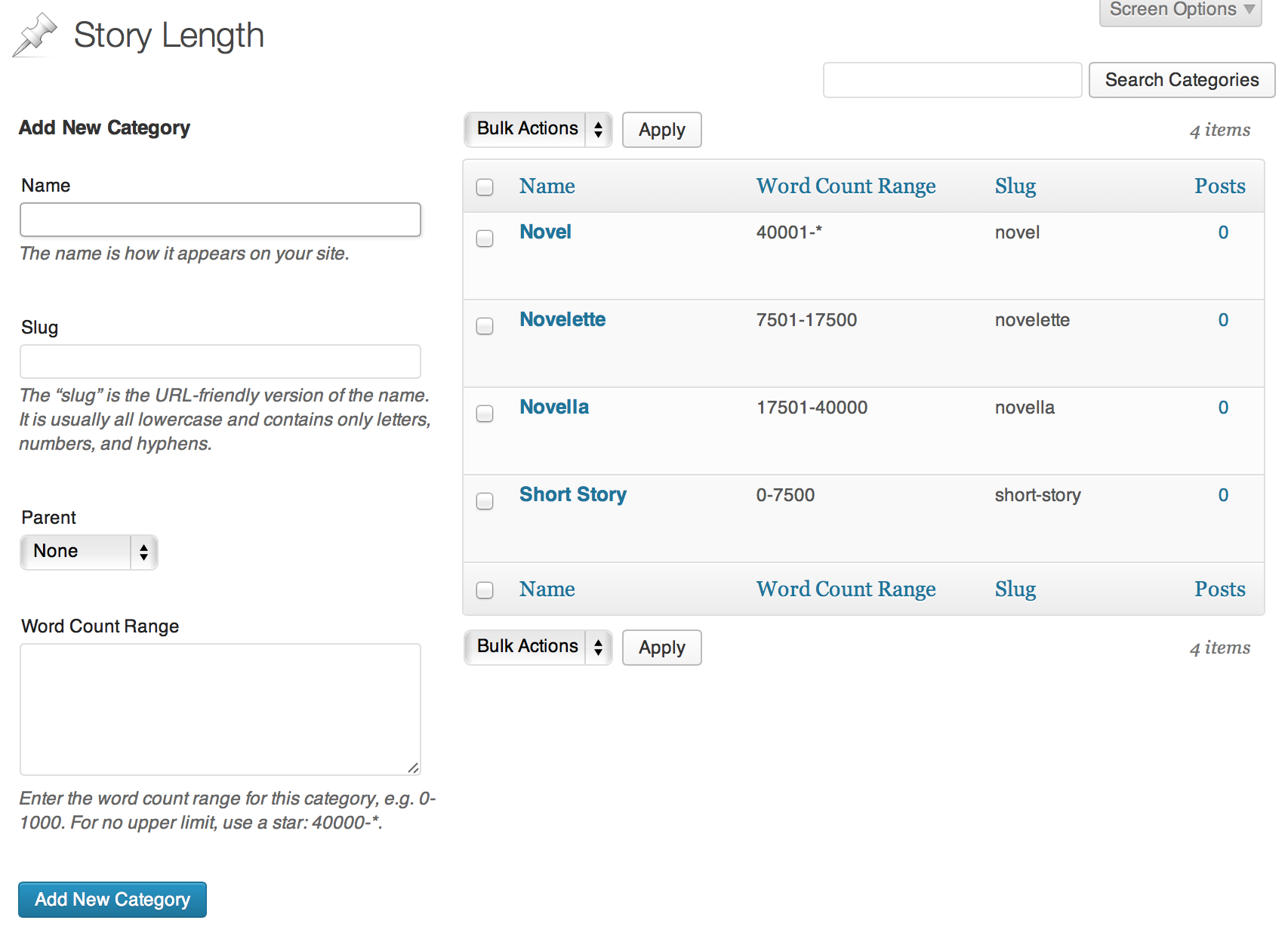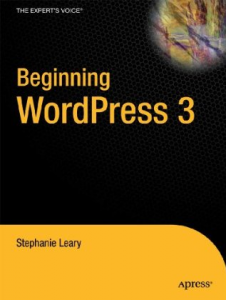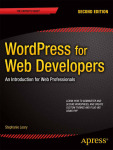
As the Hugo nomination deadline was closing in, Tempest and I were chatting on Twitter, as we do, and agreed that it’s silly that it’s so difficult for readers to know which of the finicky short fiction categories a work falls into. Unless we happen to follow the authors and catch their “this is what I wrote that’s eligible” posts at the beginning of the awards season (assuming they post such things), we have to guess, or copy and paste a story into Word and check its count.
It occurred to me that it ought to be easy for online publications to label stories using a custom taxonomy. Then they could produce a yearly archive with the length right next to the title. Furthermore, the labeling could be done automatically by simply counting the words in the story, assuming said publication publishes stories as separate posts with no intro or other extraneous text — which, from my not-very-scientific survey, seems to be the case most of the time.
So I whipped up a quick proof of concept: the Story Length Taxonomy plugin. It creates a custom WordPress taxonomy called length and automatically assigns the right category, based on the post’s word count, when you save a draft or publish. (It’ll update automatically, if the word count changes between drafts.) The word count ranges are easy to change, if you’re using something other than the Hugo scale — just edit the category descriptions, or create new categories. Here are a couple of screenshots:
This is meant to serve as a proof of concept, although WordPress-based publications might be able to use it as-is. Things you’d probably need to change:
- The post type, if you use some custom post type to separate fiction from your publication’s blog.
- Your theme’s story template, to display the length term (and only on stories, not on your editorial updates or other nonfiction posts).
- You’d probably need to create a taxonomy archive template, preferably to create a concise list of titles and authors per year.
This would make it fairly easy for a publication to create an end-of-year awards eligibility list, either by linking straight to each term’s archive page for the most recent year or using something like Bill’s Display Posts Shortcode plugin: [display-posts taxonomy=”length” tax_term=”short-story”]
I hope some of you find this useful. Want me to tweak it for you? Just let me know.






Leave a Reply